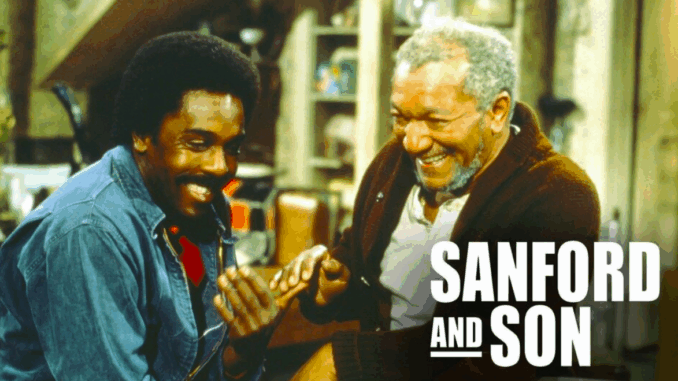
When Sanford and Son premiered in January 1972, television was not prepared for Redd Foxx. Loud, crude, hilarious, and deeply human, the character of Fred G. Sanford burst into living rooms like a lightning bolt—and nothing about American TV would be the same again.
Adapted from the British series Steptoe and Son, the NBC show centered on a junk dealer and his long-suffering adult son in Watts, Los Angeles. But unlike its British predecessor, Sanford and Son injected its narrative with a uniquely American blend of cultural humor, racial commentary, and working-class struggle. And at its center was Foxx, a boundary-breaking stand-up legend known for his raw nightclub routines and off-color humor.
The casting was a gamble. Redd Foxx was well known in the Black comedy circuit but largely unknown to white mainstream audiences. Demond Wilson, his younger co-star, was relatively new to television. Both assumed the sitcom would flop. “We were doing it for some quick cash,” Wilson later admitted. But that quick cash turned into cultural gold.

The chemistry between Fred and Lamont—mismatched in temperament but forever entangled by blood and business—offered something real. Their relationship was combative but filled with love. And when Fred clutched his chest yelling “This is the big one, Elizabeth!” in mock heart attacks, America laughed—and recognized the theater of family dysfunction.
What made the show revolutionary wasn’t just its humor—it was representation. For the first time, a Black father and son led a mainstream American sitcom, and they weren’t softened for white audiences. They argued, hustled, insulted neighbors, and tried to survive. It wasn’t a sanitized version of Black life; it was alive, unpredictable, and wholly authentic.
Sanford and Son quickly became a top-rated hit, paving the way for other African-American-led shows like Good Times, The Jeffersons, and What’s Happening!! It proved that diversity in casting didn’t just check a box—it brought real audience engagement and financial success.
Though it ended in 1977 after six seasons, its legacy endures. Fred Sanford became an icon—Redd Foxx, a television pioneer. And Sanford and Son, for all its rickety sets and laugh tracks, remains a cornerstone in the history of American television. It was the show that let a junk dealer from Watts clean up in prime time—and in doing so, opened doors for generations to come.
